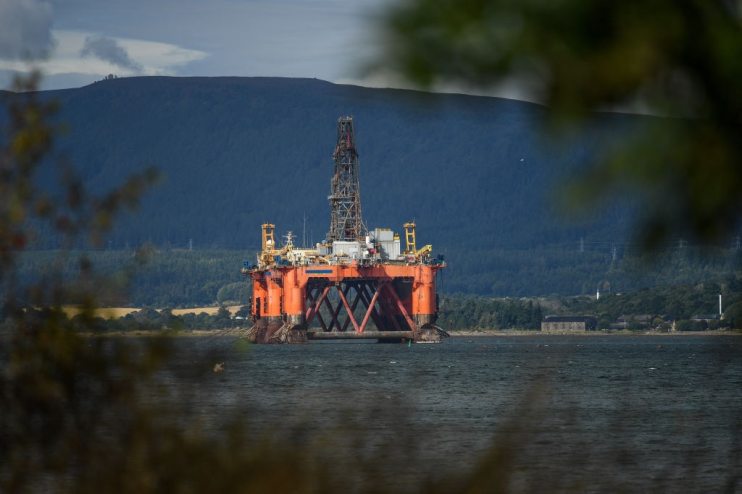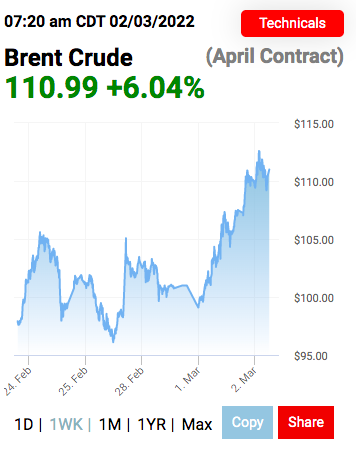Oil prices peak at $113 per barrel as fears over supply shortages escalate

Oil’s seemingly irresistible rally continues amid growing concerns over supply disruption as Russia ramps up conflict in Ukraine.
Earlier in today’s session, Brent Crude reached a peak of $113.02 per barrel – its highest since June 2014 – before settling at $111.03, reflecting 5.77 per cent growth on the day.
During the same time period, WTI Crude spiked 5.45 per cent to $109.05.
The rising prices reflect heightened worries of supply shortages in already tight markets – as Russia responsible for over eight per cent of the world’s oil production.
Meanwhile, the discount on Russian oil compared to Brent Crude has climbed to more than $18 per barrel on the physical market yesterday.
This is comparable to discount levels recorded following the collapse of the Soviet Union, with buyers shunning its crude supplies.
According to Reuters, Urals grade oil traders have been unable to find any willing customers, even at such a massive discount.
US traders at hubs in New York and in the Gulf are shunning Russian stocks of oils, as they fear unwittingly violating sanctions.
While the West has so far avoided energy specific sanctions, fossil fuel giants such as BP, Shell, ExxonMobil and Equinor have also announced plans to ditch their lucrative Russian assets – further isolating the country’s markets from the West.

There is little suggestions tensions between the West and Russia could ease any time soon.
At the state of the union address yesterday, US President Joe Biden warned Vladimir Putin that the Russian leader “has no idea what’s coming”, hinting at the possibility of more sanctions.
This does not mean the West is unconcerned about supply shortages.
The US, alongside multiple members of the International Energy Agency (IEA), agreed yesterday to release 60m barrels of oil reserves to compensate supply disruptions and contain prices.
However, this announcement has failed to make an impact on the market.
Commerzbank analyst Carsten Fritsch explained: “Yesterday’s announcement by the IEA that 60M barrels would be released from strategic oil reserves did not have the desired price-dampening effect. This is because the quantity to be released would cover a mere two weeks of Russian oil shipments.”
Conditions across the oil industry were already characterised by tight supplies prior to Russia’s invasion of Ukraine, with OPEC+ consistently missing its raised output production targets since the start of the year.
The organisation is due to meet today, and is expected to stick to plans to add 400,000 barrels per day of supply each month – even if keeps missing its increased output quotas.
Ole Hansen, head of commodity strategy at Saxo Bank, suggested that demand destruction could also factor in if prices continue to rise.
He told City A.M. “At this point the best chance of arresting the rally is through peace in Ukraine, preferably with Putin gone. If not the price may rise to the point where demand destruction sets, probably around $120 – just like we are seeing in the EU gas market where gas prices ten times above the long term average are leading to lower demand, as some heavy energy consuming industries cut production.”
The oil rally is already being felt in domestic markets, with UK petrol prices rising to record levels.
Prices at the pumps are now averaging 151.67p for unleaded and 155.23 for diesel – worsening a cost of living crisis that includes soaring household energy bills, grocery inflation and tax hikes.